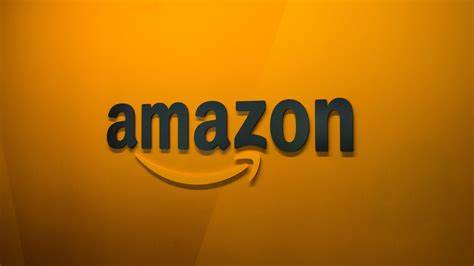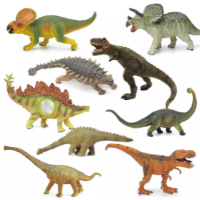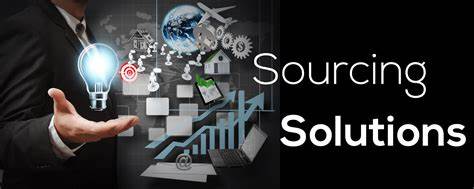
How to Sell Wholesale on Amazon in 2022
In order to sell hundreds of millions of different products to consumers around the world, Amazon’s sales platform is supported by more than 2 million third-party sellers worldwide. Of those sellers, 26% sell products using a sales model called wholesale.
Wholesale is the practice of purchasing bulk branded products from another manufacturer, supplier, or distributor to resell to consumers. Examples include popular consumer electronics, kitchenware, and even popular toys.
Selling wholesale on Amazon in 2022 is a lucrative opportunity — but there’s a lot you need to know before diving in. This article offers the pros and cons associated with the wholesale business model and offers step-by-step instructions on how you can efficiently get your business up and running on Amazon.
How wholesale works on Amazon
In a nutshell, selling wholesale on Amazon comprises the basic steps of:
1. Setting up a seller account
2. Finding a high-demand product to sell
3. Sourcing the product (in this case, from the manufacturer)
4. Creating an optimized listing to rank against your competitors
5. Launching and promoting the product
6. Managing and growing your business (including inventory, sales, etc.)
(See here for more on how to sell on Amazon.)
For all methods of selling on Amazon, sellers will need to follow certain business setup practices.
For wholesale sellers, this may require you to get a wholesale license — which might also be called a business license, tax exempt form, or something else, depending on where you live. Make sure you look into what the wholesale license requirements are in your country or state.
How does wholesale differ from other business models?
At first glance, wholesale may seem similar to the other business models on Amazon. However, there are some pretty big differences as detailed below.
Wholesale versus arbitrage
Arbitrage is the process of purchasing products from retail sites at a discounted price to resell on Amazon. Like wholesalers, resellers buy branded products. Unlike arbitrage, wholesalers make bulk purchases instead of individual purchases.
Also, wholesalers negotiate rates with suppliers and manufacturers directly (ie. earlier in the supply chain), whereas resellers (arbitrage) purchase discount products retail to sell via retail.
Wholesale versus private label
Wholesalers purchase existing branded products whereas private label sellers create their own branded products to sell on Amazon.
Because of this difference, wholesalers do not necessarily need to create new product listings. Instead, they add their offer to an existing product listing. On the other hand, private label sellers must create their own product listings.
Wholesale versus dropshipping
Dropshippers list goods for sale on Amazon. Then, when a purchase is made, they place an order through the supplier/manufacturer of the product, who fulfills the product on behalf of the dropshipper.
Wholesalers own their inventory and are in charge of fulfilling orders themselves.
Why sell wholesale?
Pros:
· Product demand: You can sell established brands (Apple, Kitchenaid, etc.) that consumers are already searching for. This takes the burden off your business for marketing.
· Quick to get started: Behind retail arbitrage, wholesale is the easiest business model to get up and running. More than half of wholesalers (51%) in Jungle Scout’s study of thousands of Amazon sellers told us it took them less than six weeks to get their businesses up and running.
· Profitable: Also, 57% of wholesalers told us that they started to turn a profit in under three months, compared to 65% of private label sellers who said it took six months for them to see a profit.
· Scalable: You can focus your time on growth, even building a team to manage the day-to-day operations, rather than focusing on building a brand, creating listings, or other efforts fledgling brands need to do.
Cons:
· Competition: Nearly all of the listings on which you place offers will have multiple sellers. And since the only “lever” you have to pull is price, it can sometimes become a “race to the bottom.”
· Up-front cost: Because you must purchase goods in bulk, usually, wholesaling is more expensive than reselling or dropshipping.
· Research: The most time-consuming aspect of wholesaling is research. You will have to explore dozens — maybe even hundreds — of product opportunities and ensure that you can get the product in stock from a supplier.
How to make money selling wholesale products on Amazon
1. Find a good product to sell wholesale
Make sure that the product is not sold by Amazon or a private label seller. Amazon can afford to lose money on a sale. As such, they will price their products lower than many competitors, so you don’t want to (and likely can’t) compete with them.
Further, private label sellers often block other sellers from placing offers on their respective listings with similar products.
Look for established brands. You don’t want to have to market for a company that’s not your own. Remember: a big part of wholesaling is about riding the coattails of successful brands.
Check for the product’s demand. Use Jungle Scout’s Extension or free Sales Estimator to estimate a product’s monthly and daily sales (more on this below). You want to find products that have a chance of selling tens—if not hundreds—of units per day.
2. Calculate how much money you can make
Obviously, you’re interested in selling a product on Amazon to earn a profit. Here’s how you can evaluate sales and profitability before making an investment.
Make sure your product is priced within 2% of the Buy Box
The Buy Box is the widget to the right side of the Amazon product page that lists pricing and has the gold button that reads “Add to Cart.”
Whatever the current price is in the Buy Box, you want to be within 2% of that price. If your price is higher, your offer for the product may never display in the Buy Box.
Understand the product’s fees
Next, make sure you know what fees to expect from the product. The easiest way to do this is to use Amazon’s FBA calculator. Enter the ASIN of the product into the calculator, enter the data, and review.
Determine your profitability
Subtract Amazon’s fees and the cost of your product from the sales price. If you’re in the positive, then congratulations: you’re profitable!
If you know how many products you expect to sell (if you have the stock or can estimate it — see next step), you can calculate profitable from those sales and fees, too.
Estimate your monthly sales
Determine the product’s monthly sales estimate using the Jungle Scout Extension or free Sales Estimator. Divide that number by the number of sellers on the listing (rather, those within 2% of the Buy Box price) plus one (which will be you). This is the average number of sales those wholesalers share on the listing.
For example, if a product has 3,000 sales per month and there are currently 9 sellers selling the product within 2% of the sales price, the math looks like this:
3,000 / (9 + 1) = 300 sales per month.
Understand your turn rate
To avoid costly storage fees on Amazon, try to keep only 2-3 months of sales in stock. For example, for the example product above, you would need 600-900 units in stock in order to cover sales between orders.
You can continue to monitor how much stock you’ll need and when to reorder with Jungle Scout’s Inventory Manager.
3. Research products with high potential on Amazon
If you aren’t sure where to start your search for good wholesale products to sell on Amazon, you can use Jungle Scout’s Product Database, which sorts Amazon’s massive catalog based on your criteria.
This looks like the perfect opportunity. It’s priced well enough to earn profits, there’s sufficient consumer demand, and there aren’t too many sellers or reviews that we won’t be able to compete in the space.
Once we do this homework to find the right product to consider selling, we move on to sourcing.
4. Find the right suppliers
Finding suppliers for wholesale products looks a little different from sourcing a private label product. Typically, you’d use a tool like our Supplier Database to find high-quality suppliers in China or other top overseas manufacturers. But for wholesale, we’ll go directly to the brand owner.
Yup, that’s right! To open a wholesale account, you’ll contact the brand owners directly. If you’re approved, you will be able to place an order and start selling as soon as possible—some brands may even ship to Amazon for you!
There are a few benefits to this approach:
You don’t have to ship products from China
This is a huge plus. Since the brands you will be contacting are most likely located within the US, you won’t have to wait weeks or months to receive your inventory or worry about things like customs clearance or overseas shipments.
You don’t have to wait for responses from Chinese suppliers
Usually, in order to contact suppliers in China you’d need to stay up late to communicate or wait until the next day to get a response. With wholesale, the brands you contact will be working normal US business hours.
You don’t need to create your own brand
One of the biggest benefits of selling wholesale products is that you’ll be reselling someone else’s brand—you won’t have to start from scratch and launch a new product. The idea is to source a product that is already selling well on Amazon.
Sell products with little to no PPC advertising
Since you will be selling a product that already has a following and sales history on Amazon, you won’t really need to worry about advertising. Again, the idea is to sell products with existing strong demand. If you want to help boost your sales, PPC is still recommended but not necessary for many products.
How to find the brand’s contact information
Getting in touch with a brand is as simple as Googling them. Using the previous example, let’s search for “Presto.”
Once you find the brand’s website, navigate to the contact section. Sometimes, a brand will have a “wholesale” tab, so keep an eye out for that.
Here is an example of what you can say to initiate a negotiation:
“Hello,
I am interested in opening up a wholesale account with Presto products. Please let me know what information you require from me and I will get it back to you as soon as possible.
Thanks,
[your name]”
What brands or distributors will require from you
Now that you know how to find and contact brands, you need to be aware of what they’re likely to ask for as a prerequisite to opening a wholesale account.
Register a business or sole proprietorship
You will need to register a legal business entity or do business as a sole proprietor in your state. When filling out a wholesale form from a brand or distributor, they will ask for this information.
Resale certificate from your state
This allows you to purchase products from a brand, distributor, or wholesalers tax-free for the purpose of reselling. Most brands or wholesalers will not allow you to purchase at wholesale without this.
Apply for an EIN number
An EIN (Employer Identification Number) or Federal Tax Identification Number is basically a social security number, but for your business. You can receive an EIN number for free from the IRS.
Now that you know how to find suppliers and what you’ll need to do business with them, let’s move on to the negotiation.
5. Contact and negotiate with suppliers
When you contact the suppliers, you want to demonstrate how you can add value to the brand. Remember that these manufacturers are big companies concerned with new product development, patents, global marketing initiatives and so on.
You are offering to help extend their brand and increase their sales.
This also gives you a fantastic advantage to negotiate with here. You can help them with selling on Amazon, because they often don’t have the time or know-how to do it themselves.
Here are some ways you can offer to add value:
· Identify any problems that you can help with them. For example, does their product have poor images? Could the SEO for their listing use improvement?
· Show examples of how you can make their products more appealing or address customer pain points (see the reviews for this). After you identify the issues, tell them what you can do to help them.
· Look for brands that aren’t interested in selling their products on Amazon themselves. These might even be brands that are already selling on Amazon, but have had difficult with it in the past. If you can effectively convince them you bring the Amazon selling experience, you’re solving their problem.
If they come back with a resounding “no” at first, that doesn’t mean it’s the end. Sometimes, negotiations take a while. Continue to follow up every month or so.
Plus: How to source established brands that aren’t already on Amazon
There are also a handful of ways to source brands that aren’t yet on Amazon.
1. Look for successful Kickstarters, especially those with thousands of backers. These business owners may not have sufficient knowledge about Amazon and its benefits. As a wholesaler, you would purchase extra units of their product to sell on the platform once their product is manufactured.
2. Check Facebook ads, which a lot of entrepreneurs use to start advertising their products. Similar to Kickstarter, these entrepreneurs may not know enough about Amazon to get started there. You could help them get set up on the platform and expand their reach.
3. Follow lifestyle and consumer-facing blogs. Blog posts from major influencers (think Real Simple or Joanna Gaines) can sometimes lead you to awesome products that aren’t yet available on Amazon.
How to fulfill your wholesale orders through Amazon
There are two ways to fulfill your Amazon sales: Fulfillment by Amazon (FBA) and Fulfillment by Merchant (FBM).
Fulfillment by Amazon is a program Amazon offers that lets you ship your products to Amazon’s fulfillment centers to store. After you make sales, Amazon’s picks, packs, and ships the products on your behalf. This takes a lot of the pressure of your new business as you won’t have to worry about shipping your own goods.
Plus, the fees for FBA are often less than the costs involved with shipping the products yourself.
However, if you are selling products that turn slowly or are oversized, FBA may not be the best choice for your business. You may have to turn to your own resources to store and ship your products.
In that case, Fulfillment by Merchant may be the optimal fulfillment method for your business.
Unlike FBA, rather than paying Amazon a fee for taking care of their orders, FBM sellers are responsible for handling the storage, picking and packing, and shipping of their products to their customers.
Get started with wholesale now with YiwuBazaar
If you want to sell on Amazon, but don’t want to get involved with private labels, wholesale is a great alternative. Plus, as mentioned above, selling wholesale could mean turning a profit in half the time it might take as a private label seller.
So don’t wait! Explore your opportunities with us and start wholesaling now.


